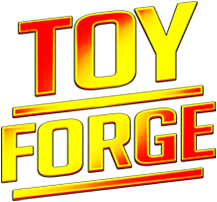Printing Tips
In this guide we will share techniques that will help you get the best out of your Toy Forge prints. The relevancy of this information may depend on the type of printer and filament you decide to use, but we expect the general guidelines here to be applicable to the vast majority of FDM printing solutions.
Slicer
All Toy Forge products are designed and tested using the Cura Slicer. Download our Cura Profile here.
To ensure the best results while using other slicers it is important to follow these Slicing Guidelines:
Infill Percentage.
It is recommended that you print Toy Forge models with a low infill ratio. This is to prevent warping/melting of small objects or fine detail areas when the print head is in contact with the surface for too long. Sample products pictured and featured on Toy Forge at printed at 10% infill with ABS to produce the pictured results.
Print Speed.
Printed prototypes and products shown on the site are printed with a Print Head movement speed of 150 mm/s. The base layer is printed at 10 mm/s to help ensure better adhesion to the print base. Please ensure that the same settings are achievable by your printer hardware and slicer.
Support and Overhang.
Toy Forge models do not require supports unless specified in the build instructions. Parts that contain overhang can be printed without support if they are oriented to face the proper airflow direction. Please see the Airflow and Orientation section below for more details.
You can use the image below to match the slicer settings in our Cura Profile to those of the slicer of you are using.

Printer and Material
All Toy Forge products are designed using Ultimaker printers. For further information on both these products please head over to www.ultimaker.com. We highly recommend using a high quality printer such as the Ultimaker or an equivalent, that has 0.4mm nozzle and a supports a layer height of 0.1mm or less.
While we don't specify any brand of filament, it is important utilize the best quality filament available to you to capture the details as best as possible and reduce print errors. In our experience we have found that the filament dye and the quality of its manufacture plays a significant role in it's thermal properties, and can lead to excess flaring and reduced clearances for interlocking parts. Please follow the material specifications mentioned on the product pages to help produce the best results.
In addition please take the required time to setup your printer as per the manufacturers recommended/best settings prior to printing any of our designs. Also please read the License Agreement here with regards to all models sold by Toy Forge.
You can verify the approximate print quality of your end user equipment by printing the free test object listed here.
Airflow and Orientation
Probably one of the largest factors that plays a role with FDM printing is the rate at which any part of a print cools down or heats up. Too much heat in a small area leads to print distortion. One way to overcome this is to have fans on the print head directed towards the printed object. Many printers include these fans into their design but if yours does not, it is strongly advised that you upgrade the print head with appropriate fan attachments.
If your printer already has fans built into the print head, please orienting the print files so that all the large overhangs and fine details point towards the fan. This will help greatly in creating the best quality prints. Toy Forge STLs are pre-oriented to take advantage of the Ultimaker fans which are situated on the left of the print head. If your printer has fans angled at different directions then please rotate the prints in the slicer to accommodate for the airflow.

Finishing Tools
There are a number of simple tools you can use to clean up and improve the quality of your finished prints. Please ensure that proper precautions are used whenever you handle any of these tools. At Toy Forge we ensure that all our tools are blunt enough to handle safely.
A variety of bladed tools such as paper cutters or pocket knives can be used to scrape away excess build up of filament or stray strands of extruded material that result from retraction of the print head. Generally a simple scraping motion can loosen up these unwanted bits without scarring the plastic print.
It's important to have a sanding stick or sand paper, usually around 200-350 grit, handy to help clean up rough edges. Printed pieces may need some minor sanding to allow them to interlock with one another. The amount of sanding required depends heavily on the type of filament and its quality.
Finally a smaller more accurate tool is recommended for the areas of the print with fine details that need adjusting. Clay sculpting tools from your local hobby store should do just fine with with most filaments.

If there are any questions with regards to this guide or any other print related queries, please e-mail us at toyforge.in@gmail.com
